#peruvian politics
Explore tagged Tumblr posts
Text
🎵Alberto Fujimori is fucking DDDDEEEEEEAAAAAADDDDDDD!!!!!!🎵
23 notes
·
View notes
Text

#fujimori#Peruvian politics#Peru#Fr guys look him up my whole country is celebrating#supernatural meme
24 notes
·
View notes
Text
Countries of the Amazon Cooperation Treaty Vow to Combat Transnational Crime
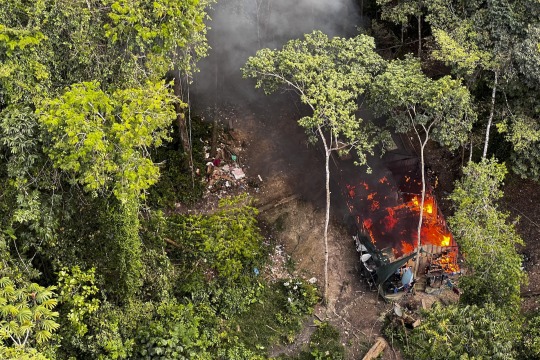
Senior representatives of countries of the Amazon Cooperation Treaty (ACTO) drew up an ambitious plan for the Amazon region in favor of sustainable development, health, and the fight against transnational criminal organizations (TCOs) that exploit the forest for their gain.
Among their latest resolutions, approved during the XIV Meeting of Foreign Ministers of ACTO in November 2023 in Brasilia, was the reactivation of the Commission on Public Security and Cross Border Crime. The special commission will be made up of public security authorities from the signatory countries — Bolivia, Brazil, Colombia, Ecuador, Guyana, Peru, Suriname, and Venezuela — to work on international cooperation to combat TCOs operating in the region.
The foreign ministers also made progress on the proposal to establish the Center for International Police Cooperation in the Amazon, with headquarters in Manaus. The center aims to focus on information, intelligence, and alert exchange; training activities; and combined tactical operations among ACTO countries to eradicate crime. It was also decided to start the process of creating an Integrated Air Traffic Control System, together with the respective competent national bodies, to monitor illegal air traffic and combat drug trafficking.
Continue reading.
#politics#environmentalism#environmental justice#Bolivia#Brazil#Colombia#Ecuador#Guyana#Peru#Suriname#Venezuela#amazon rainforest#brazilian politics#bolivian politics#ecuatorian politics#guyanese politics#peruvian politics#venezuelan politics#colombian politics#surinamese politics#international politics#public security#mod nise da silveira#image description in alt
13 notes
·
View notes
Text

"Dictator Barbie" (July 19, 2023)
Protester in Peru against Dina Boluarte's regime, who rose to power in December 2022 amidst the controversial deposition of president Pedro Castillo. Since Boularte was appointed president, over 60 people have been murdered by police forces for exercising their constitutional right to protest. Many of the people murdered were not even protesting, just caught in the wrong place at the wrong time, including minors. Police also attacked (and murdered) medical professionals who were providing first aid to injured protesters.
People are taking the streets calling for Boluarte to resign, since a government that murders people for protesting is not a democracy at all, but a dictatorship. Boluarte claims she "cannot understand" why people are protesting.
4 notes
·
View notes
Text

#idk if this will reach any fellow peruvians but how are we feeling#peru#politica#politics#destiel news#latinoamerica#latin america#south america#destiel meme#spn meme#destiel#my post#i
31 notes
·
View notes
Text
"I'm just saying that your kid's got some problems-" don't. you. ever say that about craig again. sharon. or the chainsaw is coming for you
#do u mind sir? we want to watch kyle#and stan play#. ....... .. shes not completely wrong :skull::#buut still#they all see craig as a big bad influence and a troublemaker when the craziest thing he does is flip off everyone#for whatever reason. he doesnt know why he does this either. but besides that he seems actually polite#uhmmm the evidence? i dont really have it bt like he did politely ask randy in quitar queero while the other kids were screaming at him to#laura says in pandemic that craig disappearing from the house suddenly isnt like him at all#which doesnt necessarily pprove anything hbut...... im graspong at straws#in the same episode though like the m4 were like “hey since u got 100 dollars wanna invest in our peruvian flute band?”#and even though he saw through them. said “you guys never hang out with me. but now that ive got a 100 dollars you want me in your band”or#smth like that cartman tells him “craig dont be an asshole.” and in sorta a depressed tone he just says “ill go get the money.”#idk i have a slight feeling he#whatever#craig tucker#sp#south park
8 notes
·
View notes
Text
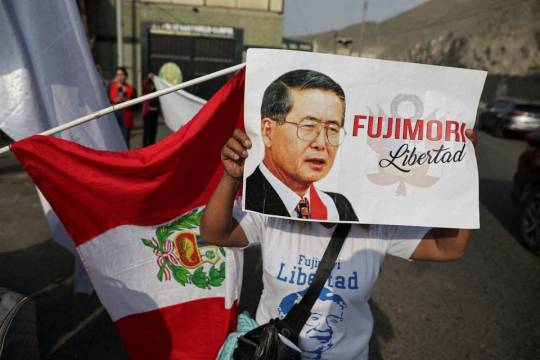
🇵🇪 🚨 PERU CONSTITUTIONAL COURT RELEASES FASCIST EX-PRESIDENT FUJIMORI, GUILTY OF CRIMES AGAINST HUMANITY, FROM PRISON
Via@XinhuaNewsAgency
Peru's former president Alberto Fujimori left prison Wednesday, where he was serving a 25-year sentence for crimes against humanity, after the Constitutional Court (TC) issued a resolution on Tuesday ordering his "immediate release."
Fujimori walked out of the black gates of Barbadillo Prison, located in Lima's Ate district, at 6:30 p.m. local time (2330 GMT), and was met by his family members Keiko and Kenji Fujimori.
Shortly before his release, the National Penitentiary Institute confirmed via social media that "in compliance with the TC ruling that provides for the immediate release of the inmate Alberto Fujimori, and after processing the document in accordance with internal protocols, it will proceed with the execution of the release."
#source
@WorkerSolidarityNews
#fujimori#peru#peru news#south america#south america news#crimes against humanity#politics#geopolitics#south american politics#fascism#news#world news#international news#global news#breaking news#current events#war crimes#peruvian news#president of peru
9 notes
·
View notes
Text

Parece ayer cuando el covid 19 parecía algo lejano, probablemente pensabas, es imposible que llegue hasta aqui, pronto encontrarán una cura, sin embargo cuando aparentaba ser un simple resfriado, las consecuencias fueron mundialmente catastróficas, a mediados de julio de 2022, alrededor de 3,76 millones de casos de COVID-19 habían sido registrados en Perú, familias, madres, padres, hijos, abuelos, fueron víctimas de este repulsivo virus, pero ¿no se han puesto a pensar, en cada una de las familias, en cada ciudad, en cada país alrededor del mundo han pasado por esto? A fecha de 12 de julio de 2023, se han registrado en el mundo alrededor de 768 millones de casos de coronavirus, no parece ser nada más que una simple cifra, pero la muerte acechaba a estas 768 millones de personas, respirando en su nuca, aquellas enfermedades y secuelas que hasta el dia de hoy parecen perseguirlas,solo, cada uno de nosotros sabe lo que ha vivido, y aunque creamos que un simple virus que parecía inofensivo, inalcanzable terminó creando un fuerte impacto en china, y no solo en china, en todo el mundo, arrastrado muertes, problemas económicos, políticos y sociales, ¿como puede terminar perjudicándonos? La globalización más que una simple palabra, lleva las respuestas de muchas dudas.


La globalización es el suceso de intercambio cultural en el aspecto económico y político, asimismo este por más lejos que este se relaciona. De igual forma este crea las interconexiones y la interdependencia a nivel mundial e impulsado por las comunicaciones, transporte y la tecnología de la información.
Okey, okey, ya sé que es la globalización, pero ¿por qué existe? debemos tener en cuenta que la globalización como tal trae consigo diversas causas sin embargo las que más resaltan son:
-Avances tecnológicos: El desarrollo de las tecnologías de la información y la comunicación, como Internet, ha sido fundamental para la globalización. Sobre todo las redes sociales, que ahora en cuestión de segundos puedes estar viendo gatitos tiernos, hasta los casos más grandes de la corrupción.
-Liberalización económica: Como sabemos hay productos que en nuestro propio país no encontramos, es por ellos que se recurre a la importación, como algunas ropas, lápices, instrumentos de música, medicinas, etc. La adopción de políticas económicas basadas en el libre comercio y la apertura de los mercados ha sido otro factor clave.
-Transporte y comunicaciones: ¿qué sería de nosotros sin el transporte? El desarrollo de las infraestructuras de transporte, como los avances en la aviación, los buques de carga y los sistemas logísticos, ha hecho posible la circulación rápida y eficaz de mercancías a escala mundial. Además, la mejora de los sistemas de comunicaciones ha facilitado la coordinación y el intercambio de información entre personas y empresas de distintas partes del mundo.
-Empresas transnacionales: Estas empresas operan en múltiples países, aprovechando las ventajas comparativas y los recursos disponibles en diferentes lugares. Su presencia impulsa la integración económica y la interconexión entre los distintos mercados.
-Migración: desde mi punto de vista la migración ha permitido un claro ejemplo de la globalización, compartir nuevas culturas, idiomas, costumbres, estilos de vida, nuevas oportunidades, especialmente económicamente y socialmente.
Por lo leído, sabemos que en la globalización intervienen varios factores, por lo cual nos preguntamos cuál es el impacto de la globalización en la forma de vida de la población
En un inicio consideraba que el impacto depende de la situación económica de cada país asimismo influye en las personas ya sea negativo o positivo este genera un impacto en ellas, sin embargo tras una ardua investigación, actualmente opino que si bien es cierto la economía influye en la globalización, no es solo ese factor, sino también en la culturización, la política, medicina, las modas, etc, un ejemplo muy claro es la moda, algo que se ve todos los días, y varía cada cierto tiempo, como lo fue el dia de las flores amarillas, el 21 de marzo en México, comienza la primavera, es por ello que ese dia se regalan flores amarillas, sin embargo en muchos lugares en mi ciudad, comencé a ver a varias personas regalar flores amarillas, esta costumbre fue adoptada de otro país, pero esta acción se hizo viral globalmente, sin embargo desde mi punto de vista esto pierde el sentido teniendo en cuenta que la primavera en peru es en septiembre, por lo cual he podido observar que muchos peruanos, y probablmente muchos ciudadanos alrededor del mundo hayan decidido adaptar nuevas costumbres y dejar las suyas de lado, este es un pequeño ejemplo de los muchos casos que se dan a nivel mundial. Otro de los más grandes ejemplos son los mercados en línea, como eBay y Amazon, facilitan la compra de productos de empresas o particulares que se encuentran al otro lado del planeta. Muchos productos electrónicos de consumo, por ejemplo, se elaboran con materias primas extraídas en India, se fabrican en China y se venden en Europa o EE. UU. A la larga considero que este tipo de mercados en línea nos permite acceder a productos que no están a nuestro alcance muchas veces en nuestros países, sin embargo este si se encuentra en otros territorios.

Como mencione anteriormente la globalización puede traer consigo consecuencias positivas y negativa, la globalización puede traer consecuencias pequeñas que a la larga pueden desaparecer pero qué hay de aquellas consecuencias grandes, como podemos combatir contra ellas, para empezar debemos conocerlas, en el perú hay grandes desafíos, como lo es la inseguridad alimentaria, si bien es cierto nuestro país importa cada vez más alimentos sin embargo el consumo de alimentos y agua es extremadamente baja, esto es debido a que no toda la población peruana puede acceder a él, hoy en día hay una desaceleración en la producción y un aumento en los alimentos básicos como lo es el arroz, maíz, trigo, mientras que países como China y la India comenzaron convertirse e importadores masivos y los precios mundiales afectan a países como Perú, otro de los desafios que enfrena el Perú es la exportacion primaria y de intensidad tecnologica,es un gran desafio por enfrenar si bien es ciero el peru es un gran pais exportador ese solo exporta materia prima, lo que hoy en dia no genera tantos ingresos como las nuevas tecnologías, la demanda de productos primarios crece alrededor del 3%, y la demanda de productos manufacturados con poco contenido tecnológico es del 5% mientras que de un alto contenido tecnologico es del 15%, paises como China quien fue el principal exportador mundial de bienes de alta tecnología, con ayuda de su modelo economico neoliberal, aplando el libre de mercado, la disciplina en la politica fiscal, la liberacion de las barreras a la inversión directa, lo que permite una mayor comercialización en los diez primeros meses de 2020, seguida de la Unión Europea 316.100 millones de dólares, los Estados Unidos de América 207.400 millones de dólares, y la República de Corea 137.800 millones de dólares, esto demuestra la gran barrera que tiene Perú para enfrentar los retos de la globalización.
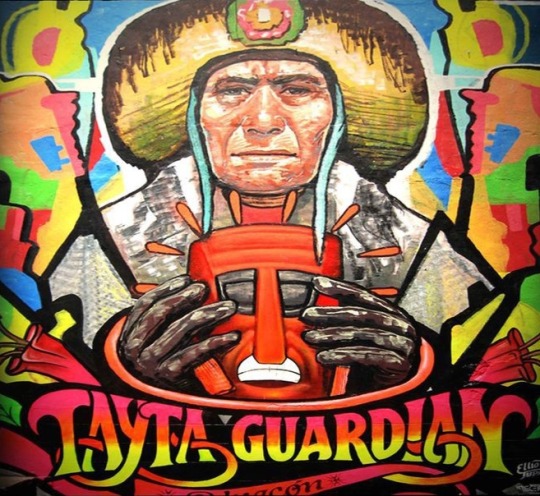
No obstante las exportaciones peruanas han logrado un récord histórico con envíos por US$ 56,306 millones lo cual consolida la recuperación del comercio exterior peruano y resalta su prevalencia como principal fundamento de la economía peruana y generador de recursos descentralizados, incluso, subsectores tradicionales como minería, petróleo y derivados; agrícola y pesca también reflejaron incrementos positivos en este periodo de análisis. En específico, las exportaciones tradicionales mineras cerraron el año 2022 con un valor exportado de US$ 33,671 millones, tomando en cuenta este caso la tributación minera en el Perú asciende al 47 por ciento de las utilidades y por ende sería superior a la de Australia (44.3 por ciento), Chile (40.7 por ciento) o Canadá (35.5 por ciento). De ser esto real, gracias al aporte extraordinario de la minería peruana en 2021, tendríamos los recursos suficientes para paliar los efectos socio-económicos que dejó la pandemia y que agudizaba la guerra entre Rusia y Ucrania. Los actores involucrados serían las empresas mineras como Buenaventura, Cerro Verde, Antamina, MMG, de igual forma la SUNAT y MINEM quienes rigen roles importantes para que la extracción de materias primas puedan demostrarse de una manera legal. Desde mi punto de vista considero que para un mejor uso de nuestros recursos se implemente la promoción del comercio exterior en el Perú se debe seguir fortaleciendo su participación en el comercio internacional, diversificando sus mercados de exportación y promoviendo acuerdos comerciales favorables. Identificar oportunidades en nuevos mercados y sectores puede ayudar a aumentar las exportaciones y atraer inversiones.

Pero si la globalización nos golpea tan fuerte, necesitamos de escudos y espadas, para poder combatir este dilema.
Desde mi punto de vista considero que deberíamos usar aquello que nos representa, aquello que nos hace ser peruanos, y mostrarselo al mundo, mostrar nuestras raíces hacerlo sentir único e innovador, pero para ello debemos comenzar desde nuestras raíces, desde la juventud, es así que opino que debe fomentarse la educación y capacitación, invertir en educación de calidad y programas de capacitación que preparen a la población para enfrentar los desafíos y aprovechar las oportunidades de la economía globalizada. Esto ayudaría a mejorar las habilidades y conocimientos de los peruanos, aumentando sus posibilidades de empleo y emprendimiento, esto nos llevaría al segundo paso, la promoción del emprendimiento y la innovación, los peruanos nos caracterizamos por tener ese espíritu emprendedor, lleno de innovación con los deseos de salir adelante esto se puede dar a través de políticas que faciliten la creación y el crecimiento de nuevas empresas. Esto fomentaría la generación de empleo, la competencia y la diversificación económica, y permitiría a Perú aprovechar las ventajas de la globalización. A mi modo de ver la cultura muestra el verdadero Perú, y varias ciudades y pueblos tienen un gran potencial para el turismo, como sucede en la ciudad de Huánuco, este posee un clima extraordinario, una flora y fauna extensa, muchos citadinos la consideran aburrida, pero si vieran más allá, encontrarán la gran diversidad que posee Huánuco, y no solo esta ciudad, desde los valles hast las junglas, poseen una belleza natural que merece ser apreciada por todo el mundo, lo que nos llevaría al siguiente paso que sería la promoción del comercio exterior, en los que se busquen acuerdos comerciales y establecer relaciones sólidas con otros países y bloques económicos. Esto permitiría a Perú aumentar sus exportaciones, acceder a nuevos mercados y diversificar su base económica.

Esto permitiría un bienestar común, creando lazos de apoyo en cada parte del perú, considero que cada persona puede comenzar dejando su pequeña huella, que a la larga, permitirá al Perú expandirse a nivel global, no es necesario, que seas un gran economista, o un gran inversionista, lo que importa es que con tus habilidades contribuyamos al crecimiento de nuestro país, si te encanta la moda, porque no usar de inspiración un baile típico, o si eres un gran emprendedor, porque no crear una franquicia de restaurantes, con el típico sabor de nuestro perú, cada persona puede dejar su granito de arena, y tu, ¿estas listo para dejar un impacto en este mundo?


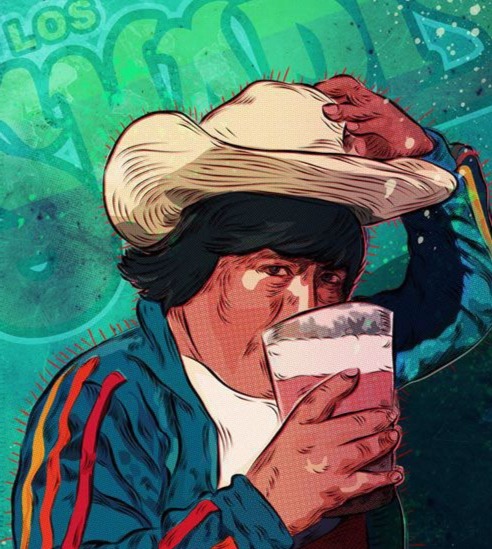
#new rebellion#young justice#young adult#peruvian#peru#anonim#changetheworld#politics#hobie brown#Spotify
3 notes
·
View notes
Text
[ID: first image is a tweet from Paddington @paddingtonbear saying: Remember to be kind and polite today. A quote retweet from sybil grimalkin @joblessthursday responds saying: royalist pig you will be a decorative rug when the revolution comes.
second image is a quote retweet of the same Paddington tweet, this time from Hanif Abdurraqib @NifMuhammad saying: we will do whatever it takes to radicalize you brother. I haven't given up hope, I've seen the work you have done to try and uplift and liberate incarcerated folks. /end ID.]

#hanif abdurraqib is so fucking real thank you king#paddington may be a polite and nice young bear but hes also a peruvian immigrant adoptee who was unfairly arrested#due to police incompetence and was neglected by the british government#and almost killed by a crazed imperialist archaeologist/taxidermist#SOOOO...... just saying. he would NOT say that
13K notes
·
View notes
Note
what kind of bear is chasing me please fast
You can identify various types of bear as follows:
Brown: Brown Bear
White: Polar Bear
Black and White: Panda Bear
Grey And Eating Eucalyptus: Koala Bear
Wearing Glasses: Spectacled Bear
Large and On Fire: Sun Bear
Chasing You Very Slowly: Sloth Bear
More Interested In Your Pic-a-nic Basket: Yogi Bear
Scary Looking: Grizzly Bear
Scary and Gross Looking: Grisly Bear
Scary, Gross, and Chewy Looking: Gristley Bear
Chases You Forever, Refuses to Give You Up: Rick-Astley Bear
Peruvian-British, Proper, Polite: Paddington Bear
Delicious: Gummy Bear
Please let us know later which bear it was that ate you.
2K notes
·
View notes
Note
Hi Gallus, I'm doing some worldbuilding and you seem like you could be connected enough for me to find an answer to the problem of dwarven agriculture. Many problems are created by the requirement of no sunlight, as even the common response of mushrooms still need light to break down decomposing matter as a primary energy source. Currently, we're thinking that they use a special type of mushroom that breaks down rocks in an energy-producing reaction, giving them enough energy to absorb nutrients and grow - this would serve a second purpose in explaining why building a massive hollowed-out mountain fortress doesn't produce an equally large amount of gravel.
Any thoughts? We're grasping at straws kinda lol
Well, some thoughts:
There's plenty of cave systems (especially Karst Systems) that are at least partially open to Sunlight- especially the kind that have rivers running through them, which is something else that's really helpful for agriculture.
For Example: This Cool AF Sinkhole cave in china that has an entire Forest in it
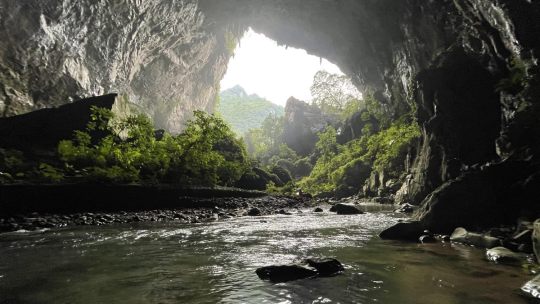
Now There's a view to put outside the city Gates!
Karst specifically is a landscape where underground rivers hollow out the limestone underground and then the cave roofs fall in. This kind of landscape answers your gravel question nicely: the hollowed out mountain does produce an equal amount of gravel, but the gravel turns up as the sandy banks of the river system hundreds of miles away.
So, there's your sunlight that can be used directly, or reflected or magically transferred deeper into the cave system.
Or they just put more holes in the roof! Unless your dwarves are also vampires, there's no reason for them to not hollow out a few Skylights into the mountain too.
But let's talk some other cave ecology and agriculture!
For starters, your dwarves could be sitting on top of a literal gold mine that would allow them to trade for a lot of needed materials and crops.
And by gold mine, I mean Salt Mine.
Historically, salt comes out of hollowed-out mountains and is worth more than gold.
Also something the humans have historically fought a bunch of wars over, so there's some free political tensions if you needed that!
I can also mean the possible fucking enormous piles of bat guano that accumulates in Karst caves, which is the world's most insanely good fertilizer, and ALSO something that has been worth more than it's weight in gold.
Speaking of Gold, another thing that often lives in sinkhole caves in abundance is BEES. turns out, limestone stalactites are a terrific place to build a hive that is difficult for predators to reach, stays dry and the stone substrate means the hives can reach many tons in weight before they start having structural issues. That sweet, sweet insect-derived liquid gold is already important to Dwarves in a lot of folklore- it's really hard to have a Traditional Dwarven Mead Hall without the honey to make the mead, you know?
So you got your mushrooms, you got your sunlight-grown sinkhole crops, you got your traded goods and you got your source of alcohol- the only thing really missing from an ancient food pyramid here is a staple carbohydrate. To that end, may I propose our good Peruvian Friend: The Potato.
Grain crops aren't actually all that nutritious and were kept around in ancient societies more as legal tender that kept the peasants busy, because wheat or rice takes months to grow, an enormous amount of labor to harvest, and wheat also needs to be milled before it can be turned into food- all enormously time-consuming processes that keep peasants busy and easy to rule tyranically over.
Potatoes though? Pop one in the ground in spring and you can dig up fingerlings all summer, and if you make potato towers, you can harvest up to 40lbs of delicious, easy-to-prepare-and-store carb out of a single plant- a real space-saver for the limited sinkhole skyspace.
If your dwarves have cheese, the potato makes even more sense, because Potato+dairy is the easiest, most nutritionally complete survival food there is.
Finally, consider: Dwarven Vodka.
This post is open for anyone to comment suggestions on, but that's my take: put your dwarves in a Karst-sinkhole cave system, give them a highly in demand resource like salt or guano, bees, and taters. Boom. Whole agriculture, economy and political scheme starters.
1K notes
·
View notes
Text
Brazil to operate Peruvian embassy in Venezuela

The governments of Brazil and Venezuela have signed an agreement for Brazilian diplomats to be responsible for operating the embassies of Peru and Argentina in Caracas. The decision comes after these countries’ diplomats were expelled from Venezuela for not recognizing President Nicolás Maduro’s victory in the July 28 election.
In notes published by the Brazilian Foreign Ministry and the Venezuelan Ministry of Foreign Affairs on Monday (Aug. 5), it was reported that “the custody of the sites of the diplomatic missions of the Argentine Republic and the Republic of Peru, including their assets and archives, as well as the representation of their interests and those of their nationals in Venezuelan territory, will be represented, as of Aug. 5, 2024, by the Embassy of the Federative Republic of Brazil in Caracas.”
Last week, it had been announced that Brazil would take over the administration of the Argentine embassy, which led President Javier Milei to publicly thank Brazil for its support. The new development is that Brazil will also be taking over the Peruvian embassy.
Continue reading.
#brazil#politics#peru#venezuela#brazilian politics#peruvian politics#venezuelan elections#foreign policy#international politics#image description in alt#mod nise da silveira
4 notes
·
View notes
Text
Life is hard for neurodivergent people in Peru. Now a grassroots uprising of people with bipolar disorder, ADHD and autism – organised through picnics in the park – is pushing for change at the heart of government.
On a bright summer afternoon in Lima, the capital of Peru, Carolina Díaz Pimentel takes some red and green tape out of her backpack. She’s in a park waiting for people to arrive at a picnic she and her friends are hosting. Guests know that they don’t have to be on time, don’t have to make eye contact, and can leave at any time if they feel overwhelmed. No one will question them.
“We want everyone to feel comfortable. At least this afternoon we want to take a break from the rules that are imposed on neurodivergent people every day to fit in,” says Díaz Pimentel, a journalist and a co-founder of the Peruvian Neurodivergent Coalition (CNP), who is herself autistic and has been diagnosed with bipolar disorder.
Hence the coloured tapes. Each attendee will choose one to express their “social battery”. If they choose the green tape, it’s because they want to participate in the activities. Red signals they prefer not to be approached. Everyone wants company, that’s why they are here, but in different ways. And that’s OK. People start to arrive. Several choose red.
CNP is a social initiative that first kicked off in March 2023. It is the alliance of five neurodivergent women who were already making waves by posting openly about their conditions on social media, but who longed to make real-world change. “I used to see this kind of gathering in countries like Mexico and Argentina and was sad to be so far away, until I saw the announcement of a picnic in Peru. Before joining the coalition, I didn’t really relate to anyone. I had good friends, people that care about me, but I knew I wasn’t like them,” says Mayra Orellano, another of the directors, an interior designer with borderline personality disorder (BPD).
Today [in March 2024] is the coalition’s fifth gathering. A picnic may not sound like fertile ground for a burgeoning social movement, but behind the bags of cookies and crisps, that is what CNP is doing – campaigning for the rights of neurodivergent Peruvians to be understood and accepted, and to live free from stigma and abuse.
The birth of the neurodiversity movement
The concept of neurodiversity has been around for almost 30 years after first being coined in 1997 in an undergraduate thesis by Judy Singer. Singer, an Australian who is now an eminent sociologist, argued that conditions such as autism, dyslexia and Attention Deficit Hyperactivity Disorder (ADHD) are all simply part of the myriad ways in which human brains are wired. It proposed a new way to think about human difference and provided a name for a burgeoning movement. In Peru, however, it remains a concept that few have heard of.
“Neurodiversity is not a medical diagnosis, it’s a political movement that brings us together to defend our rights,” says Díaz Pimentel. When she first started posting about her bipolar disorder on social media in 2017, it was taboo: very few talked about their diagnosis in public. Bipolar disorder remains a stigmatised condition in Peru...
Diaz Pimentel’s commitment is stronger than prejudice, she says. Two years ago, when she received her autism diagnosis, she posted a photo of herself holding a rainbow cake with the words ‘Congrats on the autism’ spelled out in white icing. She wanted to celebrate with her community because she considered it a rebirth: at the age of 29, some of the puzzles of her childhood finally made sense...
From picnics to influencing policy
Neurodivergence is a huge umbrella that describes people with very different conditions. In Peru, this causes confusion and a lack of accurate data. Even in the case of autism, the best recognised of the neurodivergent conditions, the National Registry of Citizens with Disabilities lists some 15,000 people on the spectrum. But according to international statistics on the worldwide prevalence of autism, there are likely more than 200,000 people with the condition in the country.
María Coronel, the psychologist in charge of the ministry of health’s child and adolescent mental health department, says that clarifying this data is one of the institution’s priorities. She acknowledges that initiatives such as CNP’s can help educate people: “These organisations add to our efforts to detect people on the autistic spectrum and give them the help they need. They have a great ability to reach others because they are telling their own experiences.”
Although CNP has only existed for a year, the group is already influencing government policy. Two congressmen have asked for members’ feedback on bills to protect the rights of autistic people. The state agency in charge of integrating people with disabilities into society consulted them on the appropriate terms with which to refer to neurodevelopmental conditions. And the ombudsman’s office made a video with them to warn about gender bias in autism early detection. (In Peru, 81% of people receiving treatment are male.) ...
Creating a more sensitive society
The CNP community says its work has changed their own lives, but Díaz Pimentel recognises that it isn’t enough. Some experts agree – that the problems are as much structural as they are societal. “In Peru we have a gap in specialised human resources. We need more psychiatrists and neuro-paediatricians. We need more young people to choose these careers,” says Coronel...
[Natalie] Espinoza is also a CNP founder and the only founder who is a mother. She has a five-year-old autistic daughter. Finding a pre-school that would accept her was very difficult. Espinoza is familiar with that kind of rejection. At a former job, she was fired when they found out she has bipolar. She had always performed well, she says, but she was told that a person “on that kind of medication” could not work with them.
“When I found out that my daughter was autistic, there was no mourning or denial, just a desire to hug her tightly because I felt very afraid of what society might do to her. I would like her to grow up in a more sensitive place,” says Espinoza. Dedicating time to the coalition’s work is her way of contributing to that change. Currently its communications reach more than 12,000 people and it has 15 WhatsApp groups. Messages whizzing back and forth help their community in everything from getting diagnoses to finding places to sleep in the event of being evicted from their homes.
So what does the coalition want next? “We want it all,” says Lú Herrera, a lawyer with BPD and the fifth co-founder. They would love to create, for example, a “neurodivergent house”, a place where they can offer shelter to victims of violence, run educational workshops, organise neurodiverse entrepreneurship fairs and provide legal advice on inclusion rights. “Everything we already do but in a place of our own.
“You know what else we want to do in that house?” asks Herrera as if reminding herself. “We want to have mindfulness sessions, dance lessons, pottery classes. Activities that will ground us. We neurodivergents struggle so much every day that it would be nice to have a place to rest.”
For now, the picnics are opportunities to recharge, ready for the next conversation-shifting step.
-via Positive.News, March 13, 2024
#neurodivergent#neurodiversity#neurodiverse stuff#stigma#bipolar#bpd#borderline personality disorder#adhd#autism#autistic#actually autistic#peru#lima#lima peru#disability#disability rights#disabled community#community support#good news#hope
389 notes
·
View notes
Text
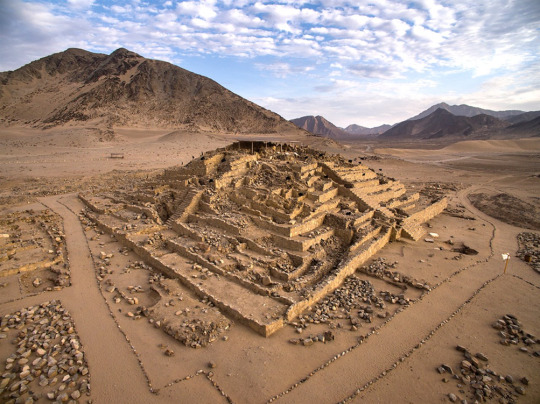


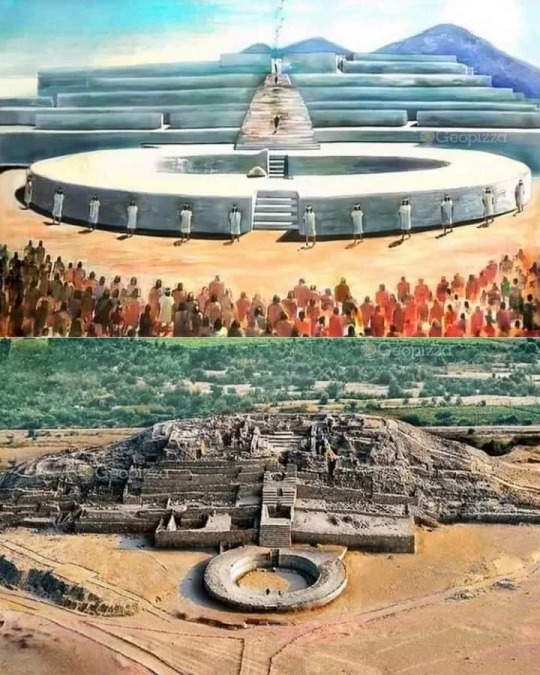
#Curiosities
The Sacred City of Caral-Supe, one of the most important and little-known cultures of the American continent, is located in the province of Barranca, Lima Region, Peru.
“It constitutes the oldest manifestation of civilization in Peru and on the American continent due to its 5,000 years of age. It is made up of 32 monumental buildings, included in a complex system of settlements that show a strong religious ideology, among which are distinguished ceremonial buildings, residential sectors for people of different social rank, a set of minor temples and production workshops. Caral led a settlement system that brought together 17 similar, although smaller, sites located in the Supe Valley.
“It expresses the complexity and development of an early socio-political and economic organization model during the Late Archaic Period (5000-3800 BP) originated independently by the Andean societies that inhabited this small fertile valley on the central Peruvian coast.”
Information:
World Heritage Sites of Peru. Culture Ministry.
499 notes
·
View notes